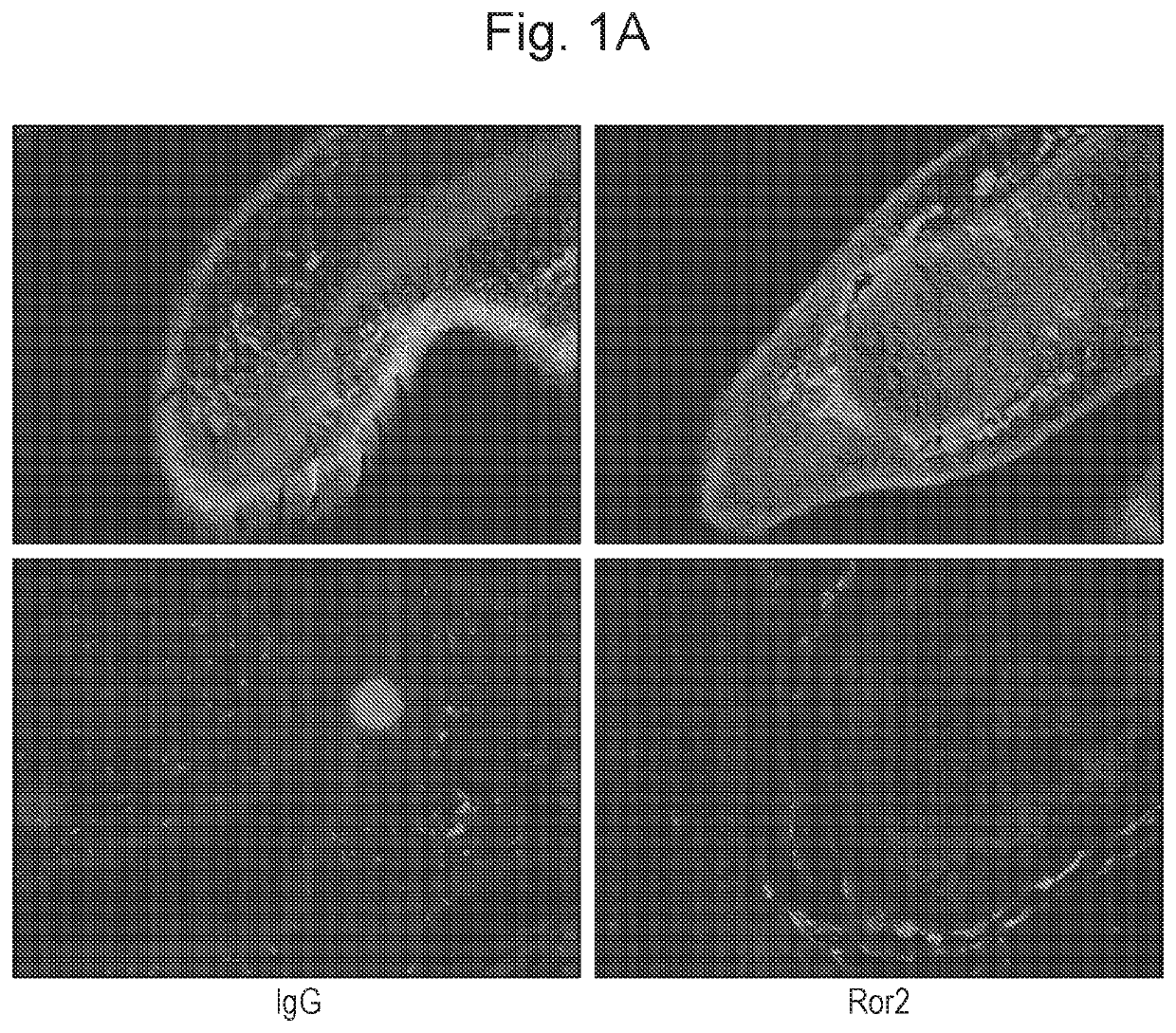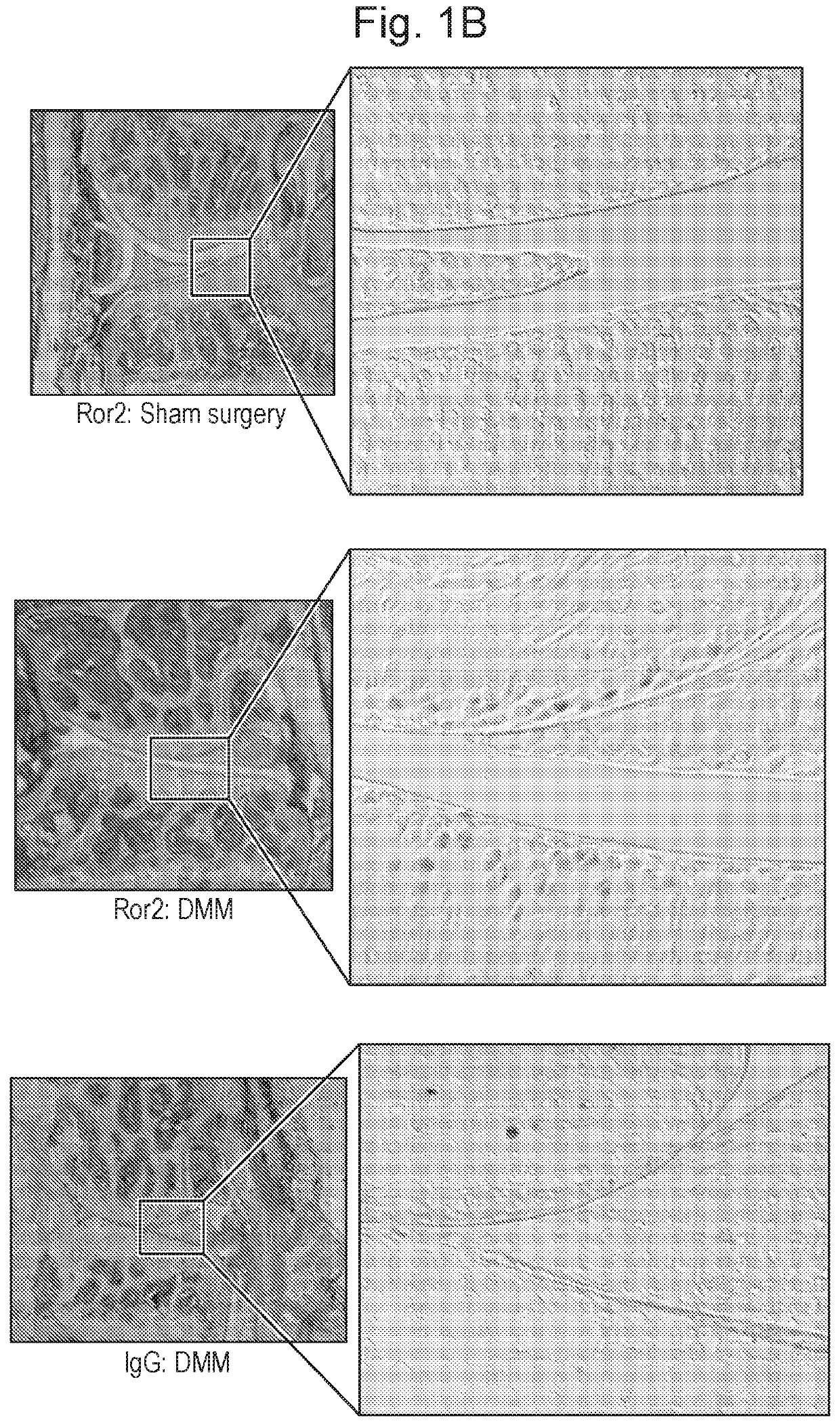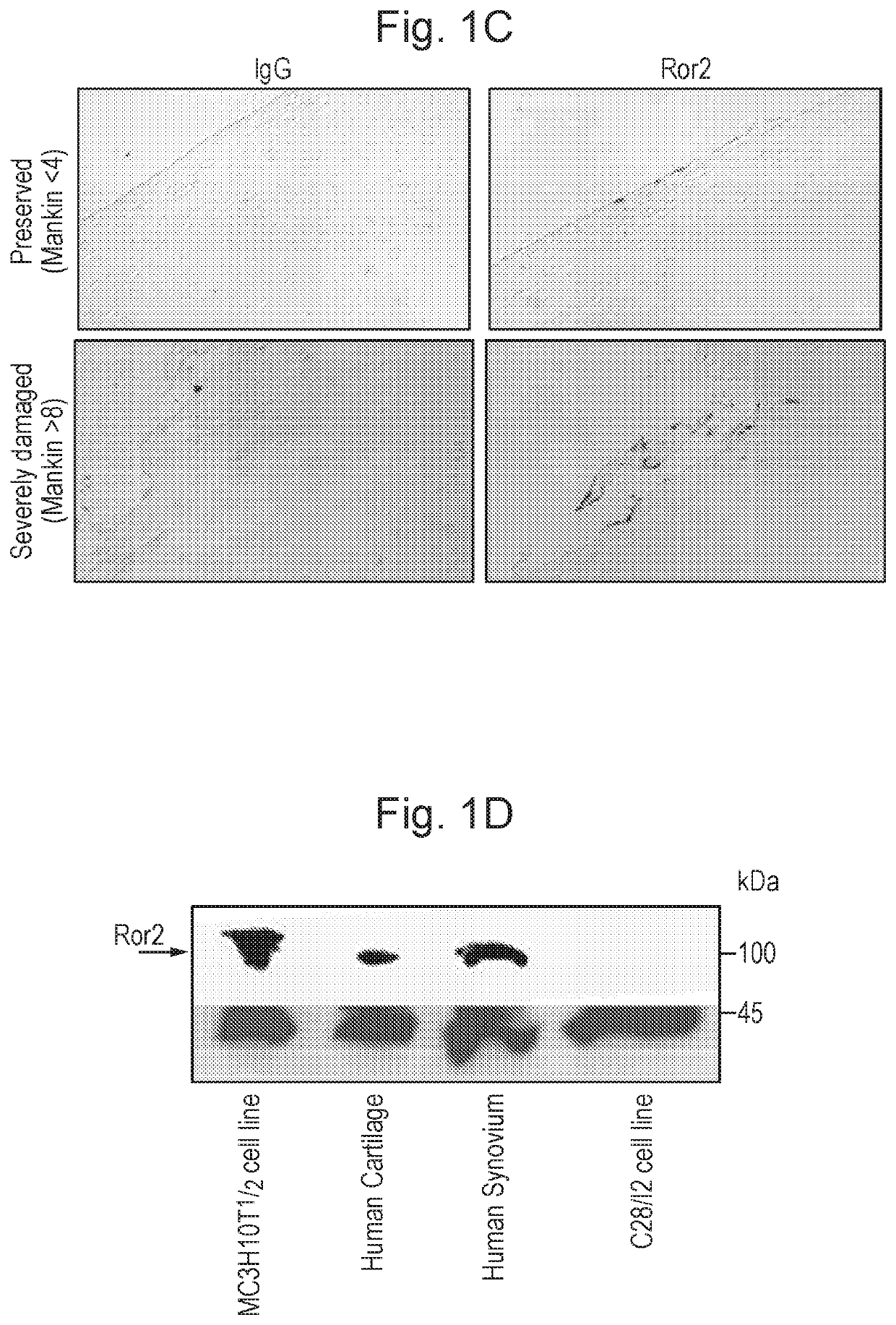Ror2 inhibitors and use thereof in treating and/or preventing cartilage loss
a technology of inhibitors and inhibitors, applied in the direction of transferases, peptide/protein ingredients, instruments, etc., can solve the problems of complex surgery, affecting the normal function of the body, so as to improve the symptoms and structural outcomes of oa and promote human cartilage formation
- Summary
- Abstract
- Description
- Claims
- Application Information
AI Technical Summary
Benefits of technology
Problems solved by technology
Method used
Image
Examples
example 1
and Methods
[0322]Overexpression and siRNA Transfection
[0323]Human and mouse ROR2 were knocked down using siRNA, at a final concentration of 20 nM in complete DMEM using jetPRIME transfection reagent (Polyplus) according to the manufacturer's instructions. A Stealth RNAi negative control duplex of medium guanine-cytosine (GC) content (Life Technologies) or a scrambled sequence with the same GC content as the target siRNA was used as a negative control.
Micromass Culture and Alcian Blue Staining
[0324]Cells were resuspended at a density of 1×107 cells / mL in complete medium, and micromass cultures were obtained by pipetting 15 μL drops of cell suspension into each well of a 24 well plate. The cells were allowed to attach for 3h and then 1 mL of complete medium was added (with stimulation if indicated). Micromasses were cultured for 3 days. Micromasses were harvested for RT-PCR gene expression analysis or fixed and whole-mount stained with Alcian blue. Alcian blue extraction and quantific...
example 2
ot Detectable in Normal Cartilage and is Upregulated in Osteoarthritis
[0329]ROR2 was detected in the most superficial cartilage layer of the articular cartilage in mouse embryos at stage 18.5 dpc (FIG. 1A). Postnatally, no ROR2 was detectable by immunofluorescence in resting conditions, however, 1 week after inducing osteoarthritis by joint destabilization, ROR2 became detectable in the upper ⅓ of the articular cartilage (FIG. 1B). To confirm ROR2 expression in humans, we compared severely damaged with relatively preserved areas of articular cartilage obtained from subjects undergoing total joint replacement. ROR2 was hardly detectable in preserved cartilage areas but consistently present in areas with high cartilage damage. ROR2 expression in human cartilage and synovial membrane was also confirmed by Western blotting (FIGS. 1C and D).
example 3
expression Inhibits Chondrocytic Differentiation
[0330]To investigate if the levels of ROR2 influence the degree of chondrocytic differentiation we performed gain of function studies on mesenchymal cell lines. First, to validate the activity of a ROR2 mammalian expression plasmid we confirmed that, in keeping with previous literature, overexpression of ROR2 in HEK293 cells inhibited the capacity of WNT3A to activate canonical WNT signalling as assessed by a luciferase reporter assay. As expected, co-stimulation with WNT-5A enhanced the capacity of ROR2 to inhibit WNT-3A-induced activation of WNT signalling (FIG. 2A). The WNT inhibitory effect of ROR2 overexpression was confirmed in the mesenchymal cell line MC3H10T1 / 2 (FIG. 2B). ROR2 overexpression did not inhibit the capacity of the GSK3 beta-inhibitor BIO to activate WNT signalling, thereby suggesting that the inhibitory effect is upstream of GSK3 beta (FIG. 2C).
[0331]We then tested whether ROR2 overexpression modulated the capacit...
PUM
| Property | Measurement | Unit |
|---|---|---|
| length | aaaaa | aaaaa |
| soluble | aaaaa | aaaaa |
| affinity | aaaaa | aaaaa |
Abstract
Description
Claims
Application Information
 Login to View More
Login to View More - R&D
- Intellectual Property
- Life Sciences
- Materials
- Tech Scout
- Unparalleled Data Quality
- Higher Quality Content
- 60% Fewer Hallucinations
Browse by: Latest US Patents, China's latest patents, Technical Efficacy Thesaurus, Application Domain, Technology Topic, Popular Technical Reports.
© 2025 PatSnap. All rights reserved.Legal|Privacy policy|Modern Slavery Act Transparency Statement|Sitemap|About US| Contact US: help@patsnap.com



